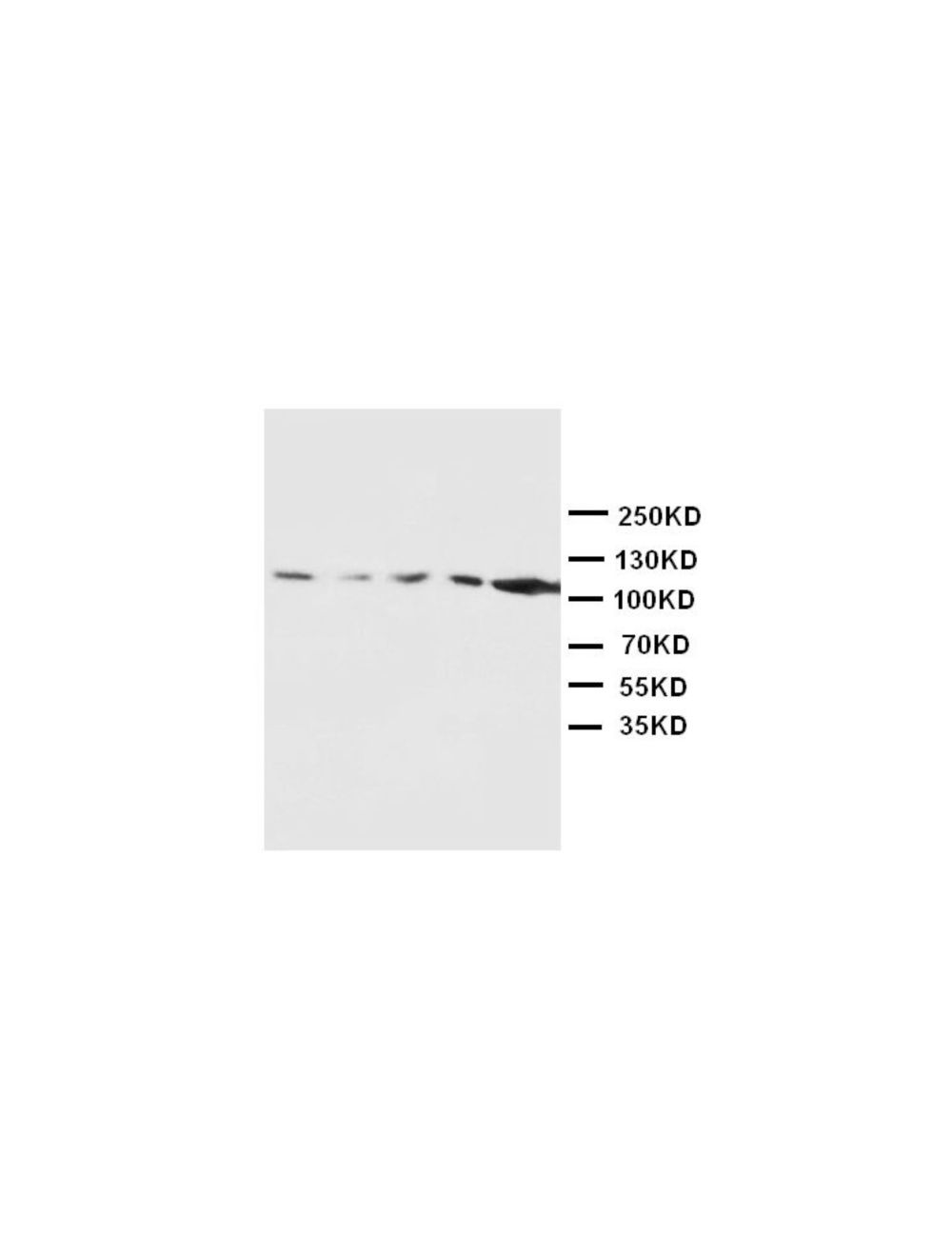N-methyl-D-aspartate receptor 1 (NMD-R1), Rabbit Polyclonal Antibody
As low as
US$427.00
Only %1 left
Catalog Number
R-1747
- Product Name N-methyl-D-aspartate receptor 1 (NMD-R1), Rabbit Polyclonal Antibody
- Product Description Rabbit anti-N-methyl-D-aspartate receptor 1 (NMD-R1) Polyclonal Antibody (Unconjugated), suitable for WB, IHC-Frozen, IHC-Paraffin-embedded.
- Alternative Names Glutamate [NMDA] receptor subunit zeta-1; N-methyl-D-aspartate receptor subunit NR1; NMD-R1; N-methyl-D-aspartate receptor; Grin1; Nmdar1;
- Application(s) IHC-Frozen, IHC-Paraffin-embedded, WB
- Antibody Host Rabbit
- Antibody Type Polyclonal
- Specificity The specificity of this antibody has been confirmed by WB and IHC against the antigen. Human; Rat; predicted to react with mouse due to sequence homology;
- Species Reactivity Human, Mouse (Predicted), Rat
- Immunogen Description A synthetic peptide corresponding to a sequence at the N-terminus of human NMDAR1 (36-53aa RKHEQMFREAVNQANKRH), identical to the related rat and mouse sequences.
- Conjugate Unconjugated
- Purity Description Affinity purified on antigen column
- Regulatory Status For research use only.
Product Info
- Product Description Rabbit anti-N-methyl-D-aspartate receptor 1 (NMD-R1) Polyclonal Antibody (Unconjugated), suitable for WB, IHC-Frozen, IHC-Paraffin-embedded.
- Application(s) IHC-Frozen, IHC-Paraffin-embedded, WB
- Application Details Immunohistochemistry (IHC) and Western Blotting (WB). A concentration of 0.1-0.5 µg/mL is recommended for WB. Rat NMDAR1 (isoform A) has a predicted length of 938 residues and molecular weight of 106 kDa. A concentration of 0.5-1 µg/mL is recommended to detect NMDAR1 in paraffin embedded tissues. Heat mediated antigen retrieval is required. Biosensis recommends optimal dilutions/concentrations should be determined by the end user.
- Target N-methyl-D-aspartate receptor 1 (NMD-R1)
- Specificity The specificity of this antibody has been confirmed by WB and IHC against the antigen. Human; Rat; predicted to react with mouse due to sequence homology;
- Target Host Species Human
- Species Reactivity Human, Mouse (Predicted), Rat
- Antibody Host Rabbit
- Antibody Type Polyclonal
- Antibody Isotype IgG
- Conjugate Unconjugated
- Immunogen Description A synthetic peptide corresponding to a sequence at the N-terminus of human NMDAR1 (36-53aa RKHEQMFREAVNQANKRH), identical to the related rat and mouse sequences.
- Purity Description Affinity purified on antigen column
- Format Lyophilized with 5 mg BSA, 0.9 mg NaCl, 0.2 mg Na2HPO4, 0.05 mg Thimerosal, 0.05 mg NaN3
- Reconstitution Instructions Spin vial briefly before opening. Reconstitute in 100 µL sterile-filtered, ultrapure water to achieve an antibody concentration of 1 mg/mL. Centrifuge to remove any insoluble material.
- Storage Instructions At least 12 months after purchase at -20°C (lyophilized formulations). After reconstitution, aliquot and store at -20°C for a higher stability. Avoid freeze-thaw cycles.
- Batch Number Please see item label.
- Expiration Date 12 months after date of receipt (unopened vial).
- Alternative Names Glutamate [NMDA] receptor subunit zeta-1; N-methyl-D-aspartate receptor subunit NR1; NMD-R1; N-methyl-D-aspartate receptor; Grin1; Nmdar1;
- Uniprot Number P35439
- Uniprot Number/Name P35439 (NMDZ1_RAT)
- Scientific Background N-methyl-D-aspartate (NMDA) receptors are a class of ionotropic glutamate receptors. NMDA receptor channels are formed from heteromers composed of three different subunits: the key receptor zeta subunit NMDAR1 (GRIN1) with an NMDAR2 epsilon subunit: NMDAR2A (GRIN2A), NMDAR2B (GRIN2B), NMDAR2C (GRIN2C), or NMDAR2D (GRIN2D) and a third subunit: GRIN3A or GRIN3B. At least 7 isoforms of NMDAR1 are produced by alternative splicing.
- Shipping Temperature 25°C (ambient)
- UNSPSC CODE 41116161
- Regulatory Status For research use only.

 1800 605-5127
1800 605-5127 +61 (0)8 8352 7711
+61 (0)8 8352 7711

